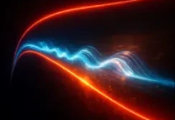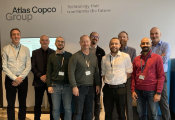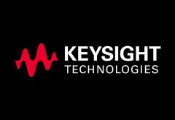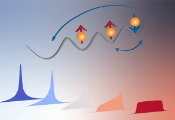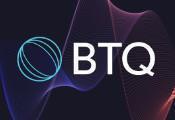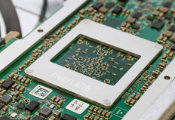Quantum Sensors Deliver Extreme Measurement Precision for Many Sectors
November 07, 2024 -- Quantum sensors pave the way for innovation in sensing technology. They are set to revolutionise a variety of sectors, spanning from health care to space and defence. VTT Technical Research Centre of Finland is at the forefront of quantum sensor development, aiming to commercialise the technology for the benefit of many. The research institute strongly believes that broader adoption of quantum technologies has a strong and positive societal and environmental impact.
We are currently living through the second quantum revolution, where the aim is to develop new technologies that capitalize the laws of quantum mechanics. Ongoing efforts in quantum computing aim to harness quantum mechanics for tackling computational challenges. Beyond computing, quantum mechanics have the potential to revolutionize the field of sensing as well. The promising opportunity lies in the seamless transfer of technologies developed for quantum computers to enhance sensing applications efficiently and effectively, while simultaneously, new technologies specifically tailored for quantum sensing solutions are being developed.
“The time is now right for quantum sensors. We have made some great inventions and also figured out how to piece together existing technologies to deliver extreme precision of measurement and sensing,” says Pekka Ikonen, Microelectronics and quantum technology lead at VTT.
How do quantum sensors differ from traditional sensors?
“Quantum sensors exploit quantum mechanical phenomena at the scale of atoms and sub-atomic particles,” explains Ikonen. “Quantum sensors can provide greater measurement accuracy by leveraging the fundamental properties of atoms to detect relative changes in the environment. Thanks to the sensitivity of quantum states, the sensors can detect even the slightest changes allowing unforeseen precision of measurement.”
Unlike classical sensors that require maintenance, e.g., due to aging parts such as springs or crystals, quantum sensors relying on atoms or sub-atomic particles offer consistent measurements over time, ensuring longevity and reliability in their operation.
Versatile applications from space to defence
The versatility of quantum sensors shines through as the technology proves equally applicable across diverse fields, spanning from medical to space and defence applications. Various quantum sensor technologies and implementations, such as superconducting sensors and sensors optically controlling atomic gas cells or diamond lattices with defects, are tailored to meet specific application needs, guiding sensor technology selection and implementation.
“VTT has a long history in developing superconducting technologies. As an example, our Superconducting Quantum Interference Devices, known as SQUIDs, find applications in the medical industry as extremely sensitive magnetometers, integrated into commercially available brain imaging systems. They are used to measure the weakest magnetic fields generated by nerve cells,” Ikonen explains. “VTT has also developed SQUIDs for the European Space Agency’s (ESA) advanced telescopes to study the nature of the hot and energetic Universe.”
In the space industry, quantum sensors are also used to conduct research on dark matter and to detect unknown particles that may contribute to our understanding of the cosmos.
“And in the defence industry, quantum sensors are in high demand and of strategic importance,” says Ikonen. “They can be used to locate landmines or submarines, for example. Or they could serve as the foundation for an extremely precise inertial measurement unit (IMU), offering autonomy from reliance on satellite positioning.”
Ikonen continues: “In addition to our long history in superconducting sensors, VTT MIKES’s expertise in atomic clocks, combined with our photonic integrated circuit platforms and laser technologies capabilities, enables us to effectively support various defense industry applications.”
Financial instruments to accelerate quantum sensor development
The EU Commission and the US have recognized quantum sensors as one of the key technologies to accelerate innovation and transform detection technologies. That is why funding for advancing quantum sensor technologies is widely available.
“Currently, there’s extensive interest in funding quantum sensor development projects. The defence industry particularly is interested in finding out what quantum could enable for them. Entities under the US Department of Defence, such as the Office of Naval Research and the Defense Advanced Research Projects Agency (DARPA) have publicly expressed they are continuously seeking research collaborators to advance quantum sensing. Europe is also actively working to ensure technical leadership and self-sufficiency with quantum sensors, and within the EU, e.g., the European Defence Agency funds related development activities. Additionally, both the European Space Agency and the National Aeronautics and Space Administration (NASA) also fund research on quantum sensors,” lists Ikonen.
He continues: “As an independent research institute, VTT is well-positioned to apply for funding. As an example, we have extensive experience with demanding space projects with ESA and NASA. This includes both R&D and supporting flight missions. VTT is also seeking new collaboration opportunities, e.g., within the US Department of Defense programs as well as within the European Defense Fund (EDF) and other European or national programs.”
VTT at the forefront of quantum sensor development
With a public mandate, VTT is dedicated to advancing the utilization and commercialization of research and technology for the benefit of both commerce and society.
"I joined VTT because we truly strive for the common good. Our goal is to create a more stable society and a greener environment through the wider adoption of technology and science," Ikonen explains.
The state-owned institute researches and develops a wide range of technologies related and applicable to quantum sensors. In addition to a wide range of quantum sensor technologies such as superconducting quantum sensor elements, VTT also develops technologies such as lasers that are needed to control quantum states.
In Espoo, Finland, the research institute boasts the largest RDI cleanroom in the Nordic countries and has begun constructing a new, state-of-the-art piloting and development facility for microelectronics and quantum technology, tells Tauno Vähä-Heikkilä, VP, Microelectronics and quantum technology at VTT.
“In our clean room, we house cutting-edge process platforms suitable for quantum sensor development”.
Ikonen continues: “We also have top talent from a broad range of interdisciplinary fields needed to design world-class quantum sensor systems. That includes not just quantum physicists, but experts in metrology, microelectronics, antenna and radio frequency technologies and nanotechnology, for instance. Experts that understand the needs of the applications, know how to combine different process platforms, and bring cross-team knowledge and design skills to the table.”
And that, according to Ikonen, is what fuels innovation more than anything else.
"Whenever enthusiasm rubs off and top experts talk to each other, something exciting and new is born."


